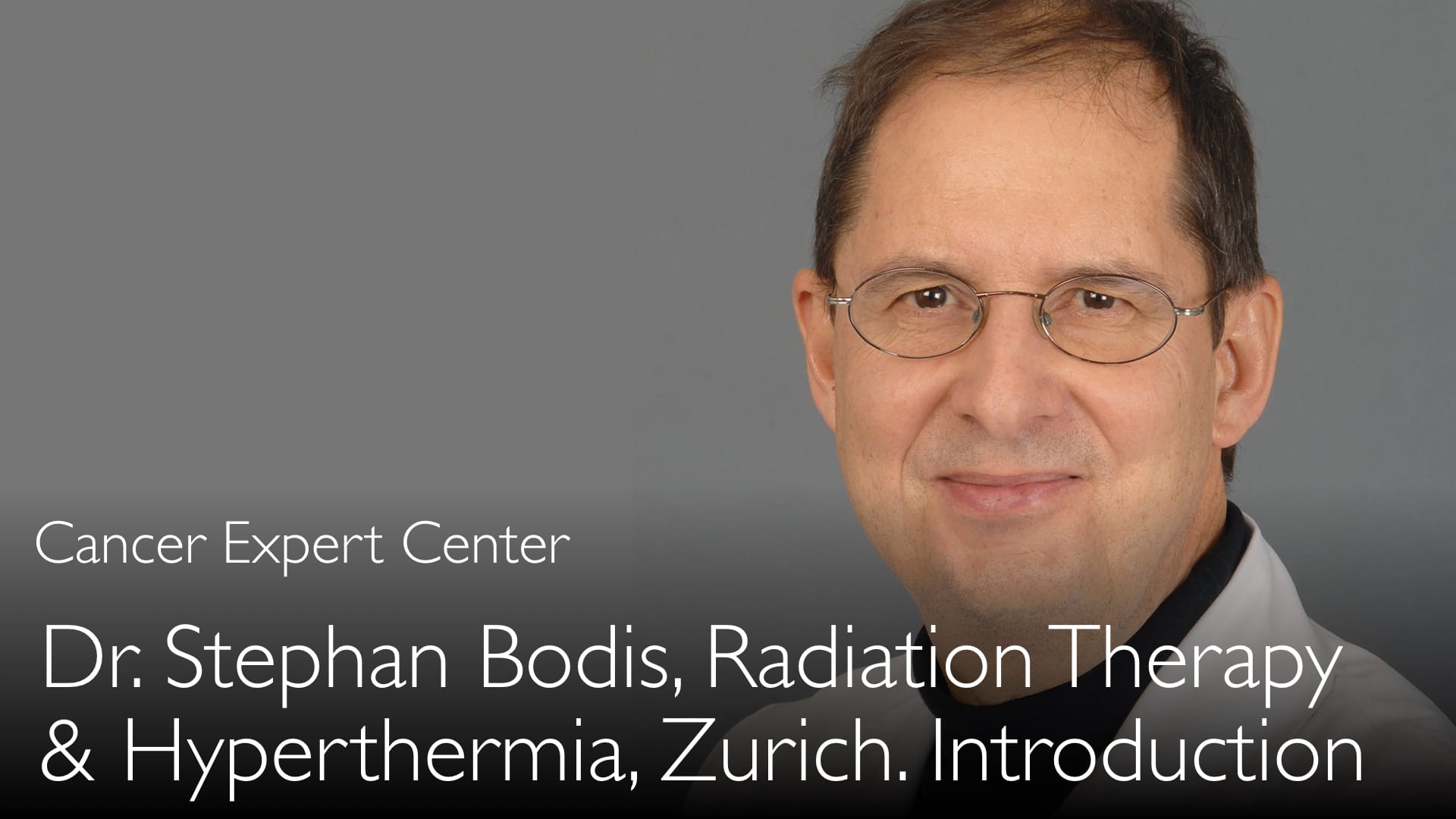ד"ר סטפן בודיס, MD, בשיחה עם ד"ר אנטון טיטוב, MD, מנהל דיון מעמיק זה עם ד"ר בודיס, המשתף מניסיונו וממחקריו הנרחבים ברדיו-ביולוגיה מולקולרית וביישום רדיותרפיה בפוטונים ופרוטונים.
התקדמויות בטיפול קרינתי בסרטן: מ-2D לרפואה מותאמת אישית
קפיצה לפרק
- התפתחות טכניקות הטיפול הקרינתי
- חשיבות הטיפול הקרינתי בטיפול בסרטן
- תפקיד המגבירי הרגישות הביולוגיים בטיפול
- טיפול בקרן פרוטונים ויתרונותיו
- תוכניות טיפול מותאמות אישית וחוות דעת שנייה
- תמליל מלא
התפתחות טכניקות הטיפול הקרינתי
ד"ר סטפן בודיס, MD, מתאר את ההתפתחות המשמעותית בטכניקות הטיפול הקרינתי בעשורים האחרונים. בתחילה, טיפול קרינתי דו-ממדי (2D) היה הסטנדרט, שהסתמך על צילומי רנטגן בסיסיים וכלים פשוטים. גישה זו התבססה בעיקר על ניסיון מקצועי וחסרה דיוק. כיום, שיטות חישוב מתקדמות חוללו מהפכה בטיפול הקרינתי, ומאפשרות כוונון מדויק יותר לרקמות סרטניות תוך חסינת תאים בריאים.
חשיבות הטיפול הקרינתי בטיפול בסרטן
טיפול קרינתי נותר אבן יסוד בטיפול בכ-50% ממקרי הסרטן. ד"ר סטפן בודיס, MD, מדגיש את תפקידו הקריטי alongside ניתוח וכימותרפיה. המורכבות של הטיפול הקרינתי גדלה עם הכנסת סוגי קרינה שונים ושימוש במגבירי רגישות לקרינה, המשפרים את יעילות הטיפול ותוצאות המטופלים.
תפקיד המגבירי הרגישות הביולוגיים בטיפול
ד"ר סטפן בודיס, MD, דן בשילוב מגבירי רגישות ביולוגיים בטיפול קרינתי מודרני. חומרים אלה מגבירים את הרגישות של תאי הסרטן לקרינה, והופכים את הטיפולים ליעילים יותר. גישה משולבת זו היא חלק ממגמה רחבה יותר towards רפואה מותאמת אישית, שבה טיפולים מותאמים למאפיינים הביולוגיים הספציפיים של הסרטן של המטופל.
טיפול בקרן פרוטונים ויתרונותיו
טיפול בקרן פרוטונים מודגש על ידי ד"ר בודיס כהתקדמות משמעותית באונקולוגיה קרינתית. טכניקה זו מציעה כוונון מדויק של גידולים, ומפחיתה נזק משני לרקמות בריאות סמוכות. היא מועילה במיוחד בטיפול בסרטנים הממוקמים near מבנים קריטיים, כגון גידולי מוח, where דיוק הוא paramount.
תוכניות טיפול מותאמות אישית וחוות דעת שנייה
ד"ר בודיס תומך בחשיבות של תוכניות טיפול מותאמות אישית, which often include a combination of radiotherapy and other cancer therapies. He stresses the value of obtaining a second opinion to ensure that patients receive the most effective and comprehensive treatment strategy. This approach is crucial for advanced-stage cancers with metastatic lesions, where precision medicine can significantly impact patient outcomes.
תמליל מלא
Dr. Anton Titov, MD: Hello! We are with Dr. Stephan Bodis, who is Professor of Radiation Oncology at the University of Zurich, Switzerland. He is Director at the Institute of Radiation Oncology in Canton Hospital, Aarau. Dr. Stephan Bodis received his MD from the University of Basel in Switzerland. He was a resident in Radiation Oncology at the Joint Center for Radiation Oncology at Harvard Medical School. Dr. Stephan Bodis was also a Research Fellow in Pediatric Oncology at the Dana-Farber Cancer Institute in Boston and in Massachusetts Institute of Technology Cancer Research Center. Dr. Stephan Bodis then returned to Switzerland to take leadership positions in Radiation Oncology at hospitals affiliated with the University of Zurich. Clinical and research interests of Dr. Stephan Bodis focus on molecular radiobiology, an application of photon and proton radiotherapy in the treatment of cancer. Dr. Stephan Bodis is author of many key scientific articles on Radiation Therapy and cancer, and several book chapters on Radiation Oncology. Dr. Stephan Bodis, hello and welcome!
Dr. Stephan Bodis, MD: Hello, Dr. Titov. It's a pleasure to have you here, online. I'm looking forward to your questions and to the discussion.
Dr. Anton Titov, MD: Radiation therapy is required in the treatment of perhaps half of all cancers. Radiation therapy also has become very complex. There is use of radiosensitizing agents, different types of radiation, including proton beam therapy to treat cancer. Advanced computation of radiation therapy cancer targets helps to decrease the damage to healthy tissues, especially in radiation of the brain, for example. One could say that radiation and surgery are firmly on the conversion path. In what kind of cancer tumors has radiation therapy made a particular difference? Perhaps, you can describe a couple of truly innovative advances in radiation therapy in oncology today.
Dr. Stephan Bodis, MD: This is an important question to start with. Because not so long ago, 35 years ago, in Switzerland, there was a serious question. It was raised by some medical faculties and by pharmaceutical companies. They thought that within 20 years from then, Radiation Oncology would disappear because of the progress of new cancer medication, specifically, molecular targeted cancer medications. This has changed.
Let me give you a brief outline of the history for radiotherapy technology. Let’s discuss key steps in clinical progress for Radiation Oncology. Sometimes you look back, probably until 1980, we predominantly delivered a 2D cancer radiotherapy. This was crude radiotherapy, based on the experience of the professionals. Radiation oncology treatment planning was done with some plain x-rays and some really archaic tools.
2D radiotherapy is no longer something which we should do, except in a setting for palliative care. Advances in radiotherapy of Hodgkin's lymphoma, breast cancer, lung cancer, proton beam therapy, hyperthermia.





